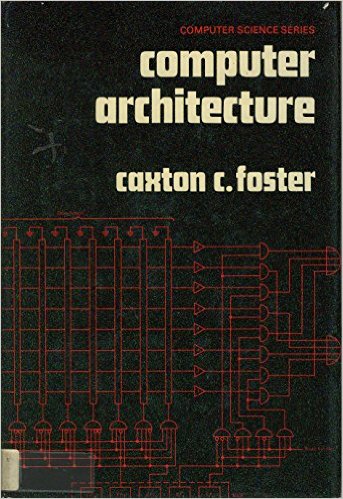Al Williams writes on Hackaday about building a small CPU as a learning exercise, and uses the Blue CPU from Caxton Foster's (out of print) book
Computer Architecture, which predates today's HDLs so describes the CPU schematically. There's now an HDL version and an assembler. Some links:
http://hackaday.com/2016/03/16/crawl-wa ... pu-design/http://hackaday.com/2016/03/25/crawl-wa ... arter-cpu/Videos within.
(Amusingly, the machine as decribed in early editions does a writeback after reads, which is necessary with core memory)
Quote:
The architecture described is _very_ simple, consisting of just sixteen instructions, a single accumulator, no CPU flags like carry or overflow, and only direct addressing. This makes programming pretty annoying, virtually requiring self-modifying code to do anything non-trivial. But in 30 pages, Foster presents pretty much the entire architecture.
For a simulator (in C), and more, see Mark VandeWettering's writings:
http://brainwagon.org/2011/07/07/a-basi ... hitecture/http://brainwagon.org/2016/03/26/more-o ... chitectureQuote:
The “Blue” architecture is ridiculously simple: only sixteen instructions, 4096 words of memory, and only one addressing mode.

Quote:
There is only a single register, the accumulator. You spend a LOT of time loading things, modifying the value, and storing them back into main memory. There is no “immediate mode”, so you have to create memory locations to store common values like “1” and “0”.

